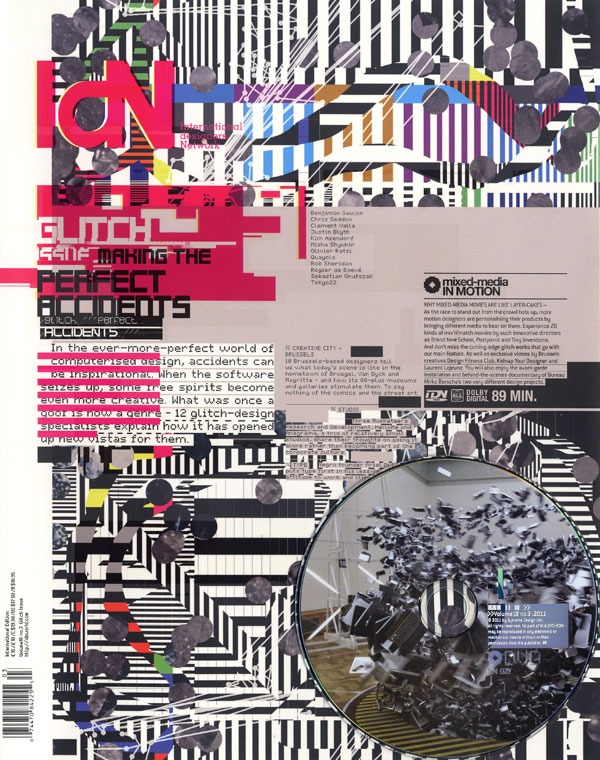IACAP: The Computational Turn: Past, Presents, Futures? conference proceedings (2011)
Filed under proceedings | Tags: · code, computational turn, computing, cyberwar, digital humanities, ethics, internet of things, philosophy, philosophy of computing, philosophy of technology, social computing, software, sousveillance, surveillance, technology, ubiquitous computing

In the West, philosophical attention to computation and computational devices is at least as old as Leibniz. But since the early 1940s, electronic computers have evolved from a few machines filling several rooms to widely diffused – indeed, ubiquitous – devices, ranging from networked desktops, laptops, smartphones and “the internet of things.” Along the way, initial philosophical attention – in particular, to the ethical and social implications of these devices (so Norbert Wiener, 1950) – became sufficiently broad and influential as to justify the phrase “the computational turn” by the 1980s. In part, the computational turn referred to the multiple ways in which the increasing availability and usability of computers allowed philosophers to explore a range of traditional philosophical interests – e.g., in logic, artificial intelligence, philosophical mathematics, ethics, political philosophy, epistemology, ontology, to name a few – in new ways, often shedding significant new light on traditional issues and arguments. Simultaneously, computer scientists, mathematicians, and others whose work focused on computation and computational devices often found their work to evoke (if not force) reflection and debate precisely on the philosophical assumptions and potential implications of their research. These two large streams of development – especially as calling for necessary interdisciplinary dialogues that crossed what were otherwise often hard disciplinary boundaries – inspired what became the first of the Computing and Philosophy (CAP) conferences in 1986 (devoted to Computer-Assisted Instruction in philosophy).
Since 1986, CAP conferences have grown in scope and range, to include a bewildering array of intersections between computation and philosophy as explored across a global range of cultures and traditions. In keeping with what has now become a significant tradition, IACAP‟11 will accept presentations across this array and range. At the same time, in order to recognize and celebrate the 25th anniversary of the CAP conferences, we specifically encourage submissions that include attention to the past, present(s), and possible future(s) of their foci as expressions of this computational turn.
International Conference of Computing and Philosophy (IACAP)
Organizing Chair: Charles Ess
Program Chair: Ruth Hagengruber
Aarhus University, 4-6 July 2011
336 pages
Cypherpunks mailing list archive (1992-1998)
Filed under mailing list | Tags: · anarchism, capitalism, code, computing, cryptography, cypherpunk, free software, mathematics, politics, privacy, reputation, security, software
Cypherpunks was an active list with technical discussion ranging over mathematics, cryptography, and computer science. It had extensive discussions of the public policy issues related to cryptography and on the politics and philosophy of concepts such as anonymity, pseudonyms, reputation, and privacy.
The list was started in 1992, and at its peak in 1997 had well over a thousand subscribers, including John Gilmore (EFF co-founder), Timothy May (author of Crypto Anarchist Manifesto), Eric Hughes (A Cypherpunk’s Manifesto), Phil Zimmermann (PGP), Hal Finney (RPOW), Bram Cohen (BitTorrent), Adam Back (Hashcash), Julian Assange (WikiLeaks), John Young (Cryptome), or Rop Gonggrijp (Xs4all).
ZIP (from Cryptome.org)
Comment (0)IdN v18n3: Glitch Issue — Making the Perfect Accidents (2011)
Filed under magazine | Tags: · code, design, glitch, graphic design, software, typography

It started out as a software malfunction – now it is a design genre. Instead of holding their hands up in horror and crying: “Oh, oh, we have a glitch!”, the artists featured in this article say: “Whoopee! We have a glitch!” – and proceed to make the most of it.
The corruption of a binary code can produce some surprisingly attractive effects, so why turn your back on them? Here, 12 creatives from a range of design fields explain how they incorporate these happy accidents into their work – and we show you the remarkable results. It may change your mind forever about the meaning of the word “mistake”.
Featuring: Benjamin Gaulon | Chris Seddon | Clement Valla | Justin Blyth | Kim Asendorf | Misha Shyukin | Olivier Ratsi | Quayola | Rob Sheridan | Rogier de Boevé | Sebastian Onufszak | Tokyo22
section of the magazine, July 2011
30 of 108 pages

